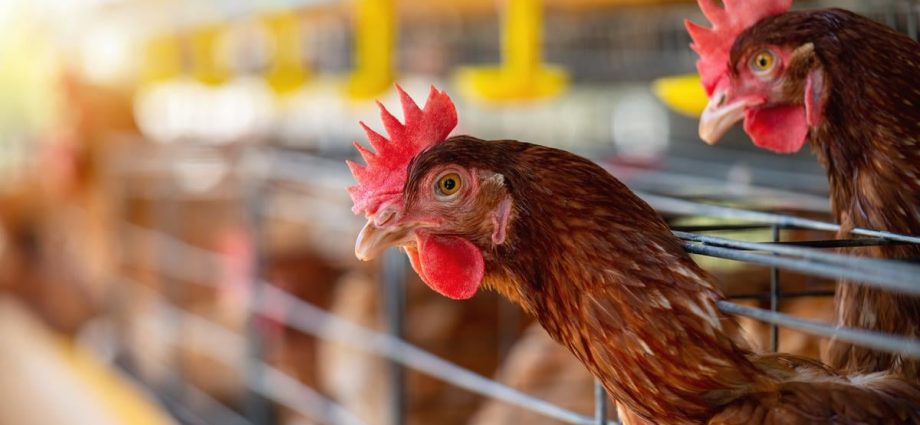TUESDAY, Oct. 22, 2024 (HealthDayNews) — Four farm workers who helped cull poultry on an commercial egg farm in Washington are presumed to have been infected with bird flu, making that state the sixth in the country to report human H5N1 infections this year.
“These are the first presumed human cases of H5 virus under investigation in Washington state,” the state department of health said in a news release announcing the infections. “The cases took place at a farm that was the site of an avian influenza outbreak in chickens. About 800,000 birds were euthanized after test results by the Washington State Department of Agriculture on Oct. 15 showed that they were infected with avian influenza.”
As a precaution, officials said they then conducted health checks on the exposed workers, who had been inconsistent in their use of protective equipment, and discovered the four cases. Those test samples have been forwarded to the U.S. Centers for Disease Control and Prevention for final confirmation and viral analysis, Washington health officials said.
“The [infected] individuals experienced mild symptoms and have been provided with antiviral medication,” state officials said. “Testing of additional individuals on the farm is currently pending, and the number of cases under investigation may change.”
The latest cases fuel growing concern among public health experts that an ongoing bird flu outbreak that is sickening dairy cows and poultry will eventually trigger human-to-human transmission of the virus.
“Since April 2024, CDC, working with state public health departments, has confirmed avian influenza A[H5] infections in 27 people in the United States,” the CDC said in its latest bird flu update. “Nine of these cases were associated with exposure to H5N1 bird flu-infected poultry and 17 were associated with exposure to sick or infected dairy cows. This includes 13 cases in California, seven of which were confirmed by CDC during the week of October 13, two of them on Friday, October 18.”
The California cases were only found in workers who had contact with infected cattle, the California Department of Public Health (CDPH) said in its latest health notice on human bird flu infections in that state. Those workers developed conjunctivitis, experienced mild symptoms and recovered.
Across the country, more than 330 dairy herds in 14 states have been infected since the outbreak in dairy cows was first confirmed in March. Avian influenza has been spreading in wild and domestic birds in the United States for several years.
Meanwhile, in what could be the first cases of bird flu spreading between humans in the United States, a group of potential H5N1 human infections in Missouri is being investigated by the CDC.
Antibody tests to confirm H5N1 infections in that group are still pending.
After a patient with bird flu was hospitalized in August, Missouri and federal health officials first determined the patient may have infected one household member and two hospital workers. The original patient had no known exposure to dairy cows.
However, “Missouri has since identified four additional health care workers who later developed mild respiratory symptoms,” the U.S. Centers for Disease Control and Prevention said in a health alert issued late last month.
If cases of bird flu among these Missouri health care workers are confirmed with antibody testing, it could mean the virus may be starting to spread among humans.
“We should be very concerned at this point,” Dr. James Lawler, co-director of the University of Nebraska’s Global Center for Health Security, told the New York Times. “Nobody should be hitting the panic button yet, but we should really be devoting a lot of resources into figuring out what’s going on.”
If bird flu infection is confirmed among these contacts, “it means the virus is inching closer and closer to what would be a real pandemic virus,” Lawler added. “That is when Pandora’s box is open.”
Dr. Matthew Binnicker, director of the clinical virology laboratory at the Mayo Clinic, said the Missouri patient and the household contact may have been infected by the same source, or one might have transmitted it to the other. Still, both scenarios point to potential human-to-human spread.
“I’m really hoping that they ultimately find out that there was some likely animal exposure, because the alternative is a little bit scary,” Binnicker told NBC News.
More information
The CDC has more on bird flu.
SOURCES: Washington State Department of Health, news release, Oct. 20, 2024; U.S. Centers for Disease Control and Prevention, news releases, Oct. 18, 2024; Oct. 3, 2024; California Department of Public Health, news release, Oct. 3, 2024; NBC News; New York Times
Copyright © 2026 HealthDay. All rights reserved.

